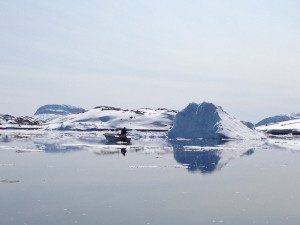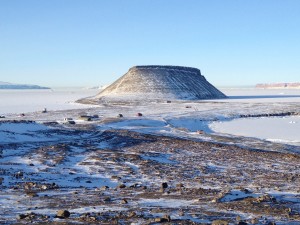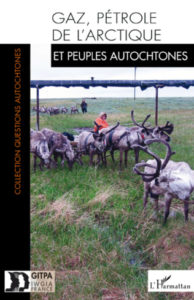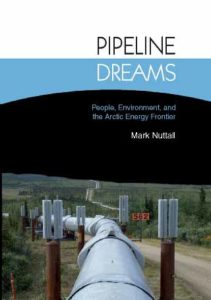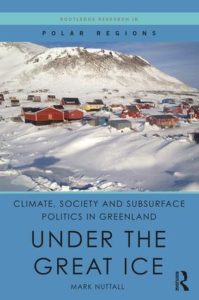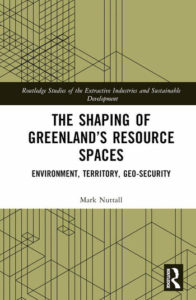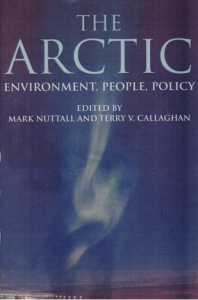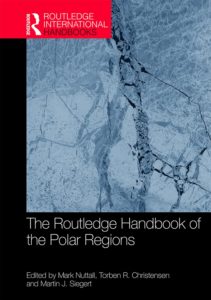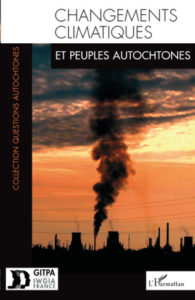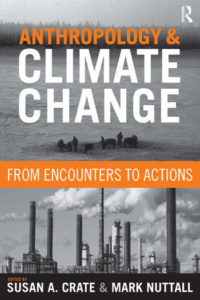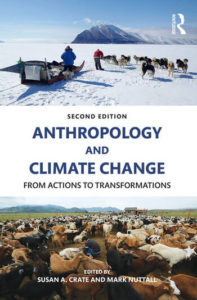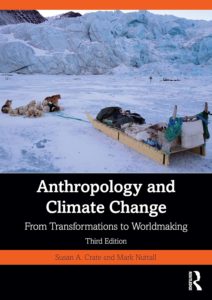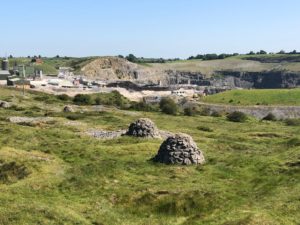Climate and Society in Greenland
For the last few years, I have focused on understanding how climate change affects communities in coastal Northwest Greenland. People in the region have long depended on hunting marine mammals such as seals, walrus, narwhal, beluga and polar bears, as well as fishing for fjord cod and Greenland halibut. Terrestrial animals such as reindeer and Arctic foxes have also been of some importance, as have musk oxen in some areas. However, the effects of a changing climate on the marine environment, as well as on land, are stark. Ice is melting, and coastal waters are warming.
I am interested not just in the consequences of such change for local livelihoods, but in how sea ice, glaciers, coastlines, and seas have become sites and objects for new forms of environmental governance shaped by ideas of unique and fragile ecosystems under threat. Conservation organisations frame northern Greenland as a zone of climate change crisis and have launched campaigns — underpinned by narratives of ruination — to protect what are termed last areas of ice. However, Inuit organisations are also working to ensure that environmental governance and conservation policymaking do not exclude local communities in the region and are campaigning for protected marine areas in which wildlife management systems and community-based monitoring incorporate Indigenous knowledge.
Subsurface Resources: Histories, Politics, Futures
I have research interests in the histories and contemporary activities of extractive industries in the circumpolar North. Some of this work has examined plans to explore for oil and gas and to build pipelines across northern lands. It has considered and reflected upon the idea of the Arctic as a resource frontier and the concerns expressed by a variety of groups and commentators over the social and environmental impacts of the oil and gas industry, as well as the opportunities development may bring to the sustainability of Indigenous and local livelihoods, cultures and societies
Much of my current work in this area focuses on Greenland and examines how political narratives, scientific knowledge, and economic assessments about the subterranean and resource wealth inform ideas about the making of an Arctic nation in a rapidly changing part of the world. Yet it also considers the ways in which Greenland’s subterranean resource spaces are social and political sites entangled with global processes. This examination of Greenland’s experiences builds upon my long-term research in the country and contributes to debates elsewhere in the Arctic and beyond. By doing so, it locates Greenland within global discussion about extraction, environmental and social impacts, and sustainability. I have written about some of this in a number of articles and a recent book, Climate, Society and Subsurface Politics in Greenland: Under the Great Ice (Routledge, 2017):
https://www.routledge.com/Climate-Society-and-Subsurface-Politics-in-Greenland-Under-the-Great/Nuttall/p/book/9781138820517
I have expanded on this in a more recent book project, The Shaping of Greenland’s Resource Spaces: Environment, territory, geo-security (Routledge, 2023). This looks in historical and contemporary detail at how Greenland’s subterranean depths have become known, and how subsurface resources have been made, through investigative practices and processes of mapping, probing, un-earthing and extraction.
https://www.routledge.com/The-Shaping-of-Greenlands-Resource-Spaces-Environment-Territory-Geo-Security/Nuttall/p/book/9781032007489
Climate, Environment, and the Anthropocene
In recent years, I have participated in multidisciplinary research projects with colleagues from the natural and physical sciences, in climate change assessments undertaken by the IPCC and Arctic Council, and have collaborated with Indigenous peoples’ organisations and human rights groups on a range on initiatives. My work has been anchored in small Arctic communities being affected directly by climate change, but it has also involved me in research with climatologists on climate scenarios, sea ice data records and marine sediment cores. My research involves dialogue within and across the social sciences and the natural sciences. It advances understanding of how the study of anthropogenic climate change allows for an interdisciplinary focus on the mutuality of nature and society, and the richness and complexity of the human world.
I have worked extensively with my colleague Susan Crate on three edited volumes of our Anthropology and Climate Change. These books examine how anthropologists engage with climate change issues, especially with their collaborators, in academic research and practicing contexts. Illustrating anthropology’s burgeoning contribution to climate change research, policy, and action, they highlight the exciting work anthropologists do as scholars, educators, and practitioners, from academic institutions to government bodies, international science agencies and foundations, working in interdisciplinary research teams and with community research partners.
The Anthropology of (Post-)Industrial Landscapes in North Wales
Project work in this area arises from ethnographic, historical and archival research in the county of Flintshire in northeast Wales, and looks specifically at the region’s rural-urban fringes, edgelands, and post-industrial landscapes. Lead mining, coal mining, quarrying, brickmaking, potteries, copper smelting, textiles, steel manufacturing and shipbuilding were major industries in Flintshire in the nineteenth and twentieth centuries. Distinct communities grew up around these activities. Many parts of the county were once filled with mine shafts, brickworks, kilns, pit wheels, mine buildings, spoil heaps, smelters, railway lines and shipyards. In the lead mining districts, a vast network of passages, adits and tunnels was carved out below ground. Tracing movement and flows across and between land and water, over surfaces, and underground, my research so far has taken me to upland reaches, along the tracks, lead ore veins and abandoned metalliferous mine workings and limestone quarries of Halkyn Mountain; to former brickmaking communities; and the liminal spaces, saltmarsh, sand, mudflats and tidal gullies of the Dee Estuary. It traces how the lives of many people in nineteenth and early twentieth century Flintshire were bound up with limestone, chert, veins of lead, coal, fireclay, underground water flow, industrial smoke, dust, copper, steel, mud and a silty river.
Some of my recent work has focused on the material and socio-technical assemblages of the drainage tunnels constructed below the lead mining landscape in the nineteenth and early twentieth centuries. As miners probed deeper to reach new veins, water levels rose in shafts and passages. Mine owners and syndicates embarked on drainage schemes, but tunnels provoked debates about power and privilege, the occupation and ownership of the subterranean through the placing of infrastructure, and concerns over the flow, disruption and contamination of underground watercourses and local water supplies. Drawing on archival material, my interest is with looking at the imaginaries about subterranean depths, their material characteristics, lead, limestone, technologies, and the entanglements of the human and non-human that were at play.
In another project, I take the notion of the remaking and reorientation of socio-material relations as a starting point to reflect on what is being promoted as the UK’s leading industrial decarbonisation project. The project will stretch across – and also, beneath – parts of Flintshire and the English county of Cheshire. Presented as a necessary solution to climate change – and an urgent project – it is supported by narratives of futuring and world-making in the ways the proponents claim it will not only reshape and remake a region and its economy, but will lead the way for similar global initiatives. In particular, I consider one element of this project: discussion about and consultation on the route of a pipeline that will carry carbon dioxide emissions from energy intensive industries in Cheshire and Flintshire to storage in depleted gas reservoirs in the Irish Sea. Part of my interest is with how the proponents look to the underground as a space for world-making. Indeed, the underground is integral to the making of a carbon neutral future, in which a buried pipeline will transport the greenhouse gas that is the largest contributor to climate change to a subsea burial ground. The subsurface, then, is one domain in which socio-material relations are realigned and reordered so as to enable decarbonisation.
